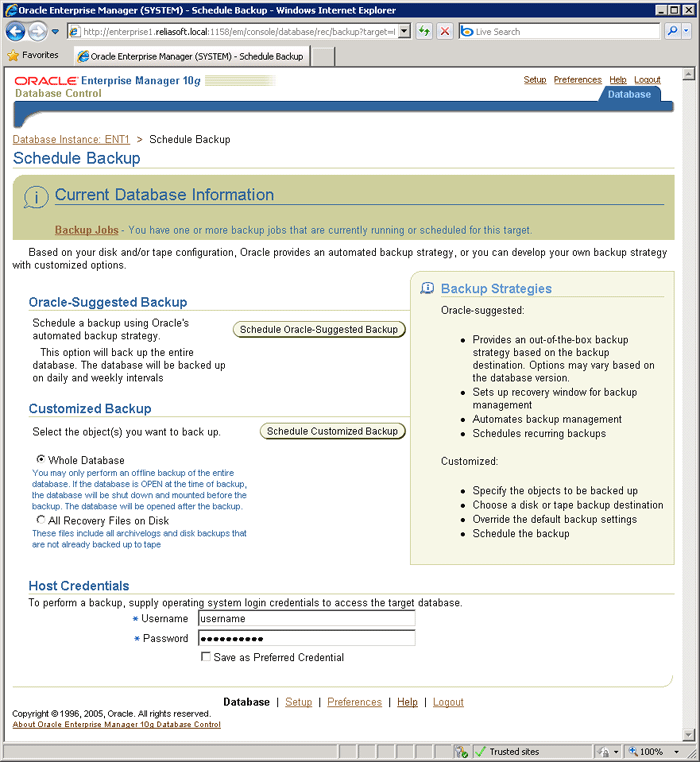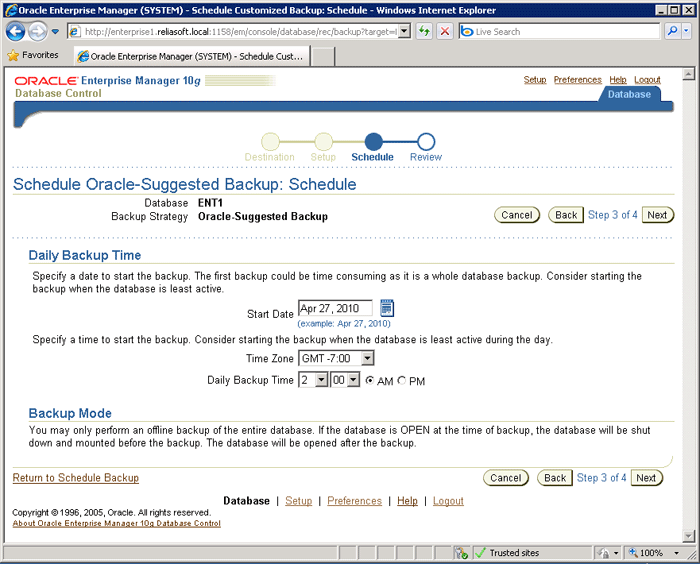ReliaSoft desktop applications can be deployed with an Oracle database for centralized data storage. With enterprise-wide, database-driven software applications such as these, it is important to have established procedures to assure that proper database maintenance and backup activities are being performed. These activities are the responsibility of the organization that implements the system (since our support personnel do not have access to, or specific knowledge of, the IT infrastructure used to deploy the system). This document presents our recommendations for the minimum database backup activity that should be performed in Oracle to protect the organization's data and keep the system running smoothly.
We make this minimum recommendation for maintenance of Oracle databases:
- Create a schedule for regular daily/nightly backups within Oracle.
Note: These instructions were prepared using Oracle 10g. To view the instructions for creating backups in SQL Server, visit SQL Server Minimum Database Maintenance.
Oracle provides two basic methods for creating backups using the Oracle Enterprise Manger (version 10g and higher) -- the Oracle-Suggested Backup and the Customized Backup. Either backup strategy will provide the minimum protection for your data. This document will cover the basic steps needed for the Oracle-Suggested Backup.
Note: To successfully create the backups, the Windows account used in the Host Credentials login for Oracle MUST either have full admin access on the Windows server where the
Oracle database resides, or must have the permission to "Logon as a batch job." To do this, choose Control Panel > Administrative Tools > Local Security Policy > Local Policies > User Rights Assignment > Logon as a batch job and make sure the account is listed or the account is a member of a group that is listed.
To backup your data using the Oracle-Suggested Backup strategy:
- Open the Oracle database instance you wish to backup by clicking Start > All Programs > Oracle > Database Control - InstanceName).
- Go to the Maintenance page and then click Schedule Backup in the Backup/Recovery section.
- On the Schedule Backup page, make sure the host credentials are correct and then click the Schedule Oracle-Suggested Backup button.


7. On the Review page a summary of your selections and the RMAN backup script that was generated based on your choices will be displayed. You can click Cancel, Back (to change your selections) or Submit Job. Click Submit Job to add the backup to your schedule.
You can read more about Oracle databases at Oracle's website. For more specific information about creating backups in Oracle, see this article.









